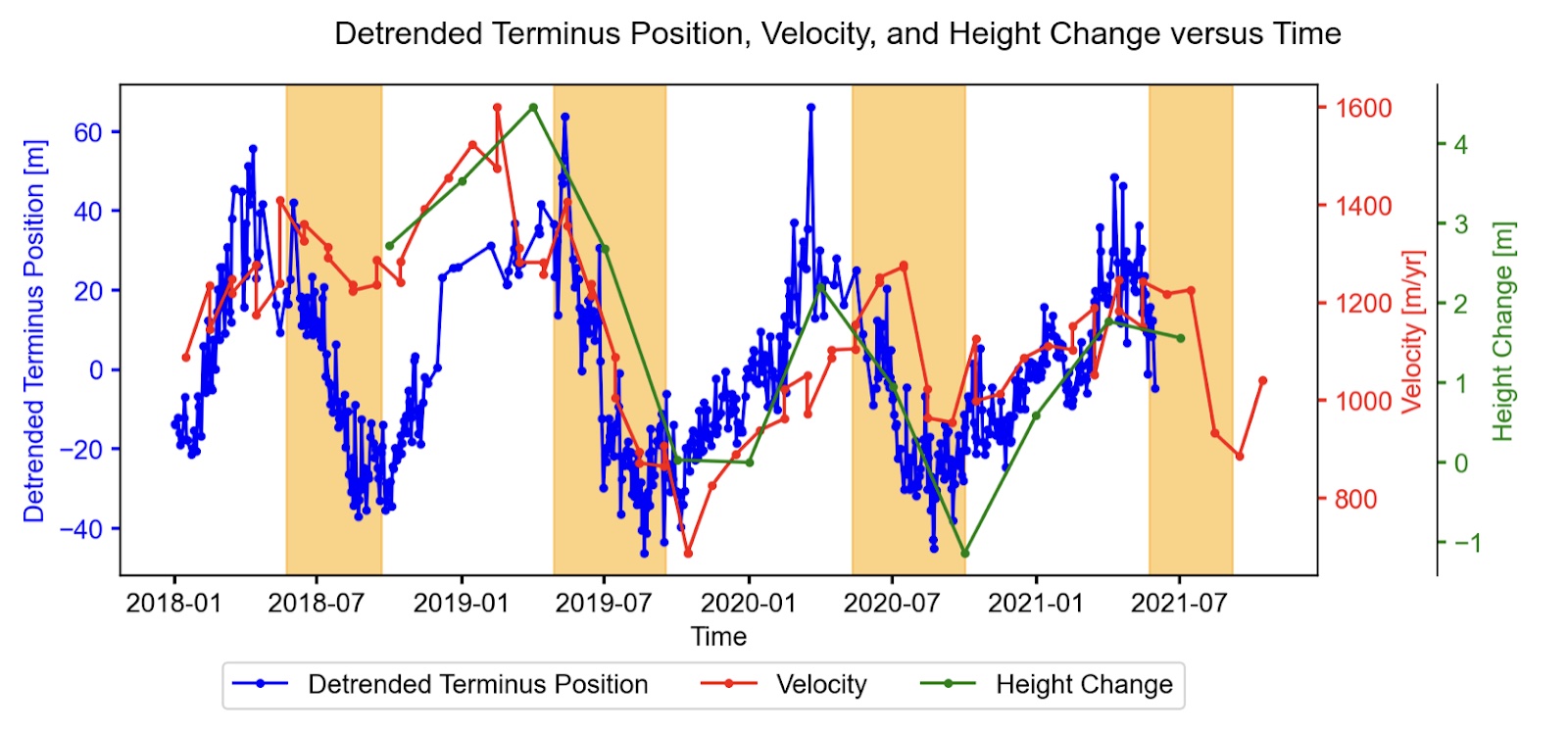Seasonality in Central West Greenland

Seasonal-scale Changes
Using ICESat-2 data from 2018 to the present, I have been working to find correlations between terminus position, velocity, and thickness change on a seasonal temporal scale. These patterns or trends may indicate a seasonal signal or a correlation between variables on a seasonal temporal scale. We can use this seasonal data to understand how incorporating seasonal signals into models could change ice mass loss predictions in Greenland.
ICESat-2 Data
I am investigating seasonal signals in marine-terminating glaciers in central west Greenland. Until recent years, glacial data has been low-resolution, collected on vastly different time scales, and was not always reliable. However, with the launch of ICESat-2, a polar-orbit satellite that began collecting data in 2018, we have access to better-resolved data. This higher spatial- and temporal-resolution data allows scientists to evaluate changes to ice sheets and glaciers on a seasonal scale, rather than just annually. Preliminary results show that incorporating seasonal changes to glaciers in projection models can lead to significantly different results than models without seasonality.